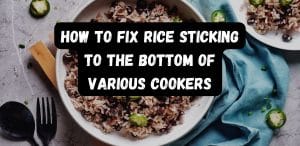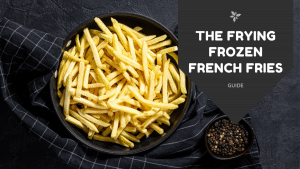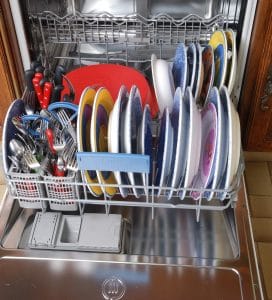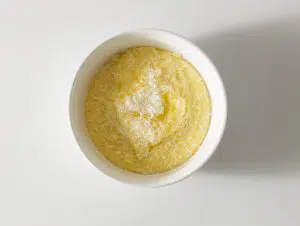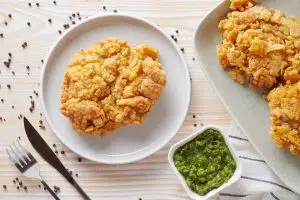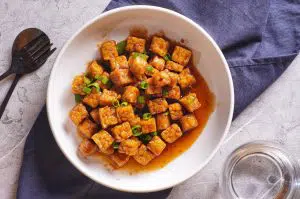Removing Burnt Grease From Bottom of Pots & Pans Guide
Important Note: When you buy through our links, we may earn a commission. As an Amazon Associate we earn from qualifying purchases. Content, pricing, offers and availability are subject to change at any time - more info.
Washing up after cooking is rarely listed as anyone’s favorite task, and it becomes even more of a chore if you’ve got a grimy pot or pan with burnt on grease waiting for you. It’s something most people have had to deal with before, so what’s the best way to do this?
Soaking a pan in vinegar, ketchup, or a baking soda and vinegar mixture lifts burnt-on grease. Abrasives like coarse salt, scouring pads, and brushes are helpful but not for non-stick pans. Oven cleaner and other chemicals are a last resort. Knowing what works on different cookware is essential.
Burnt grease is not always the result of an error by the cook or chef, as some recipes just tend towards burning. So how do you take care of a pan like this? Can you simply scrub away with a wire brush? Is it a good idea to use abrasive detergents or chemicals on all types of pots and pans? Let’s find out.
- Burnt Grease Can Be A Nightmare To Clean Off A Frying Pan
- What Works To Clean Burnt Grease From The Bottom Of Frying Pans
- Strategies For Removing Burnt Grease From Pans
- What To Do If You Still Have Burnt-On Grease In Your Pan
- Preventing Burnt-On Grease In Pots & Pans
- What We’ve Learned About Cleaning Burnt-On Grease
Burnt Grease Can Be A Nightmare To Clean Off A Frying Pan
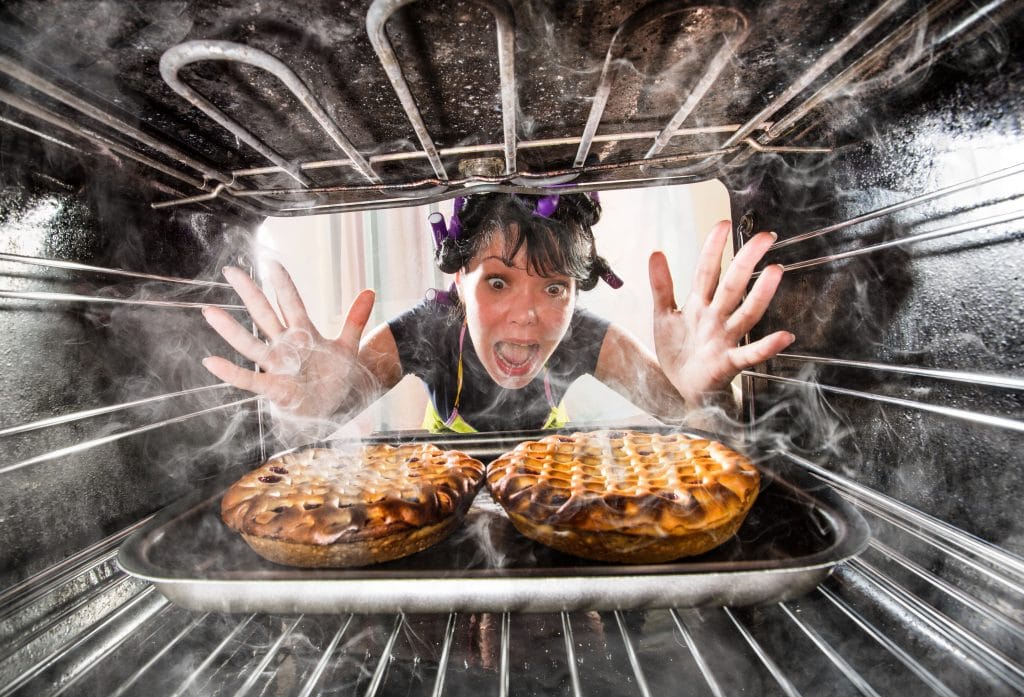
The black burnt-on stuff you sometimes find on the bottom of a pan after exposure to high heat is most often excess carbon from burnt food. This generally happens after you’ve fried up something at very high heat or forgotten about something you’ve left on the stove.
But whether you’ve made homemade caramel or you’ve pan-fried a prime cut of meat at a high temperature and now can’t get the residue off, the result is equally frustrating — it’s often tough to get the pan clean.
There are numerous helpful tips to make cleaning the pan a little easier, but first, there are some essentials to think about before you get started:
- Not all methods are suitable for all types of pots and pans – so know what you’re working with.
- If you use the wrong approach, you could do more damage.
- It’s also helpful to know what’s burnt onto the pan – hardened sugar syrup is actually easier to deal with than burnt-on grease.
- A good idea is to test a small part of the pan first before going all in, especially when it comes to using chemicals.
- Always wear protective gloves and even glasses if you’re using chemicals.
- Work in a well-ventilated area – some chemicals are strong and can harm you if you’re not careful.
What Works To Clean Burnt Grease From The Bottom Of Frying Pans
There are many things to try, but success is mainly dependent on what material your pot or pan is made of: cast iron, stainless steel, ceramic, or non-stick are just some popular examples, and what works for one may not work for the other.
Some methods may actually damage your pot or pan, which makes it even more likely that you’ll sit with more burnt-on food the next time you use it.
An excellent tip when trying to clean burnt grease is not to let it sit unattended – if you’ve just used the pan and notice the residue at the bottom, add some hot water to the pan and let it boil a little. This action may loosen the majority of the residue and make the cleaning process more manageable.
You should only do this if the pan has cooled a little – never add water to a smoking hot pot or pan, especially not a pan with hot oil. Let it cool slightly before adding warm water.
You can even add some salt or a drop of dishwashing detergent – this often helps lift the bulk of the residue, which you can rinse away under hot running water. If your pot or pan is stainless steel or ceramic, you can use a brush or pot scourer to loosen caked-on bits and pieces.
For non-stick pans, be careful not to use a brush or harsh scourer that will damage the special coating – a firm-bristled brush can do wonders to lift the initial residue without harming the special non-stick coating.
Strategies For Removing Burnt Grease From Pans
A variety of methods have been circulating on the internet for some time, but not all of these are useful, and not all of these will protect your cookware either. Here are some of the best solutions that work while preventing further damage to the pot or pan.
Vinegar Or Lemon Juice
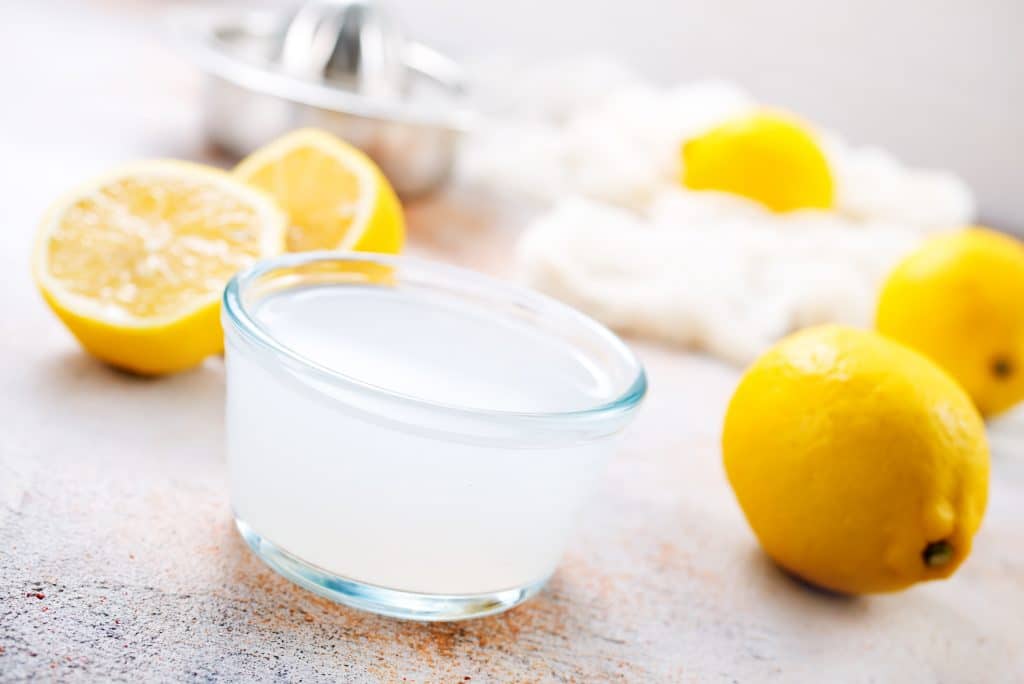
One of the strategies that works well across all types of pans is to soak the greasy cookware in vinegar or lemon juice for an hour or two. The acid in the vinegar and lemon juice is good for breaking down oil, grime, and grease, so this is always an excellent step to start with.
While this may not always remove all of the burnt-on grease, it’s a helpful first step. Follow it up with one of the following steps below.
Salt & Vinegar
Following on the vinegar trick, using salt can be helpful, too. Because salt is coarse, it helps the scrubbing process and aids in lifting the grease that’s been burnt on. It’s excellent for cast iron products and can even be used in stainless steel pots and pans, although the salt may scratch slightly.
First, soak the pan in white vinegar for an hour or two, and then add salt – it is best to use coarser types. Take a scouring pad, add a few drops of dish soap, and scrub. You can also top up on the salt if you need a little more abrasion.
Remember not to try this with non-stick types of cookware, as it will inevitably cause damage to the non-stick coating.
Does Ketchup Work To Clean Burn-On Grease From A Pan?
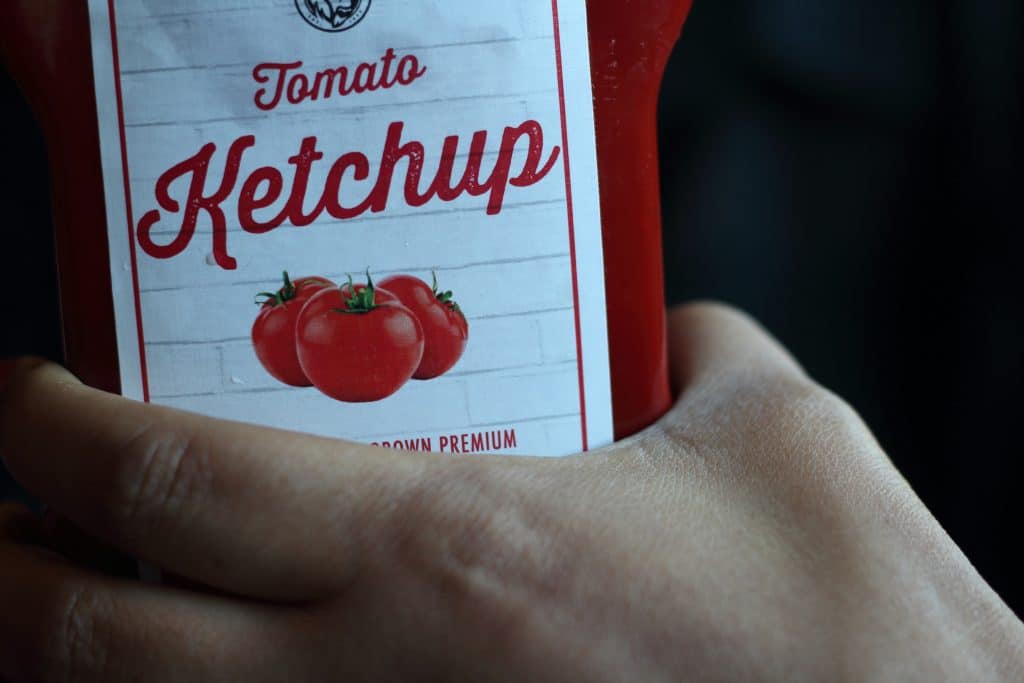
One of the popular ideas floating around on the internet is that ketchup can be used to remove sediment. And, there is some truth to this.
The acidity in ketchup has been proven to act on grease and grime in pans, although it does mean spreading a thick layer of ketchup onto the base of the pan and letting it sit for a few hours. A good coating of ketchup left overnight and scoured or scrubbed the following day is often effective.
One of the plus points of using ketchup is that it won’t damage your pan. This is useful if you’re trying to clean a non-stick pan especially.
In all types of pans except non-stick, you can even add some coarse salt and scrub to loosen the caked-on grease. Remember that abrasives will remove non-stick coatings, so instead, opt for a toothbrush or plastic-bristle brush with these.
Using A Dryer Sheet
Another popular hack found on the internet is using a dryer sheet to loosen the burnt-on grease in a pan. While it does work for milder fat, it’s not quite as effective for severely burnt pans. If you’re dealing with a slightly burnt pan, give it a try – it’s perfect for non-stick pans that need milder treatment.
Pop a dryer sheet into the bottom of the pan, and cover with hot water and a few drops of dish soap. Let it sit for around an hour. The theory is the softening agents from the dryer sheet work on the residue in the pan and helps to loosen it, making it easier to remove.
After soaking, remove the dryer sheet and use an appropriate scouring pad or a soft-bristle brush to work on the grease with a bit of dish soap.
Vinegar & Baking Soda

As it’s not abrasive, one of the best combinations for stainless steel cookware, ceramics, and non-stick types is vinegar and baking soda. It also makes a satisfying foam that helps to loosen the grime. The basics are easy to do:
Sprinkle baking soda generously on the bottom of the pan, and spray with white vinegar – it will start to fizz, but allow it to sit for a while. You can then use a scouring pad or brush to scrub away the residue. This mixture also leaves a lovely sheen to stainless steel.
Does Oven Cleaner Remove Burnt-On Grease From A Pan?
If all-natural methods fail and you’re still dealing with tough, burnt-on grease, you can try using oven cleaner. This is a little more aggressive an approach, but it works and is especially good for non-stick pans, stainless steel, and ceramics. Don’t use this method with cast-iron products.
Spray oven cleaner on the bottom of the pan and let it sit – overnight if at all possible. Then use an appropriate method of scrubbing that isn’t going to remove coatings, such as a soft bristle brush or toothbrush, and rinse in hot water. Remember to open windows for good ventilation and wear gloves.
Abrasive Or Scouring Agents
Available in various forms, products like Bar Keepers Friend are the go-to for many people who have tough, greasy, burnt-on deposits to remove. Whether you’re using spray, foam, powders, or creams, products like Bar Keepers Friend are well-known for making this chore much more effortless.
What is superb about Bar Keepers Friend is that custom products are available, so the cookware cleanser is a lifesaver and is worth keeping on hand if you tend to have such issues often. Don’t use this on non-stick or cast-iron pots and pans, though, and check the label for warnings.
Because of its ingredients, there are a few things to note when using Bar Keepers Friend and similar products. Firstly, don’t let it sit too long, and don’t mix it with other chemicals. It’s also advisable to wear gloves and rinse your pots and pans well after use.
What To Do If You Still Have Burnt-On Grease In Your Pan
If all the methods you’ve tried have failed and you’re still left with some black carbon residue, there are only a few things left to try. For the most part, this shouldn’t be a problem in ceramic and non-stick cookware, as they are designed to prevent this.
But, often with stainless steel pots and pans, you’ll find you’ve managed to get the worst of the burnt-on grease sorted and still be left with a few spots of black, stubborn composite. This means you may have to resort to an aggressive abrasive.
A wire brush may seem too hardcore, but sometimes this is what you need to resort to. Additionally, you get finer bristled wire brushes that will do the job too – and you may even need to use an industrial type connected to a machine or drill to get the last remaining bits and pieces off.
If this is where you’re at, remember that this is akin to sandpaper and will ultimately scratch the pot or pan in the process. From experience, a dense wire brush connected to a power drill does an excellent job, and since it works in a circular motion, it doesn’t create unsightly scratches.
Such intense sanding isn’t always a bad thing and will leave the bottom of your pot or pan looking bright and new – with a few swirl marks that you may need to buff out with a milder chemical abrasive. You may even find such services offered in your area.
Preventing Burnt-On Grease In Pots & Pans
Now that you’ve managed to get the tough grime and grease from your pan, you’ll be able to appreciate the effort, time, and often money that goes into dealing with the situation.
One of the best tips for dealing with burnt-on grease in cookware is knowing how to prevent it in the future. While not all burnt-on situations result from forgetting to watch the pot or pan, it’s an obvious suggestion that you should never leave pots or pans unattended.
Still, here are some tips and tricks for preventing grease burns in cookware:
- Opt for non-stick pots and pans for daily tasks, and use the appropriate utensils to protect the delicate coating. Scraping a non-stick pan with a metal spoon, for example, will remove the non-stick layer and is a recipe for burnt-on residue every time you cook.
- Proper cleaning after every use is essential. Infomercials may suggest you only need to wipe down a pan after use, but the truth is that some residue always remains. Wash in warm soapy water and dry properly, so no residue carries over to the subsequent usage.
- Avoid cleaning your pots and pans in the dishwasher. Not only does this often result in poorly cleaned cookware, but dishwasher detergents can be harsh for non-stick coatings. The same goes for abrasive detergents used in standard hand-washing.
- Consider using a flavorless non-stick spray before cooking. Whether you are using loads of butter, oil, or lard, it’s always a good idea to use a non-stick spray before you cook. It won’t alter the flavor and helps prevent excessive build-up of burnt pieces of food, making cleaning easier. You can safely coat every pot or pan, regardless of what you’re cooking.
- Use the appropriate heat setting. This seems self-explanatory, but it’s often when we’re in a rush or overly enthusiastic that we simply turn the heat up too high. Instead, opt for a slightly lower temperature and spent a little more time getting your meal prepared.
What We’ve Learned About Cleaning Burnt-On Grease
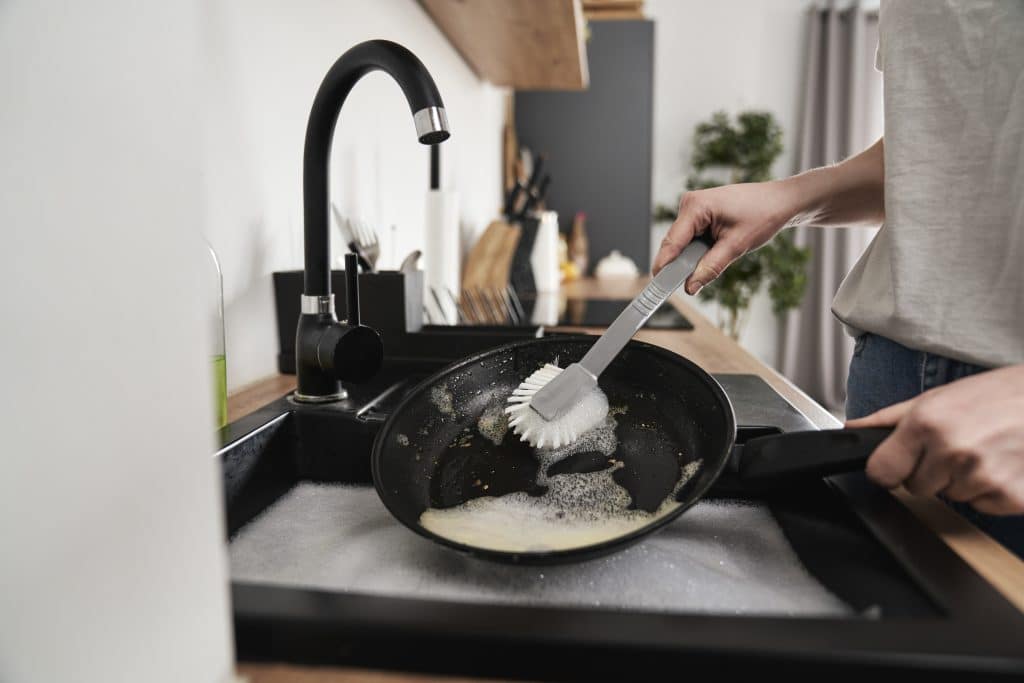
While there are some preventative things you can do, dealing with tough burnt-on grease in cookware is a situation that will likely crop up once in a while.
To make it less likely, ensure you use the appropriate cooking tools and a lower heat setting when you’re cooking and properly clean pots and pans between usages.
While hacks like ketchup, vinegar, and even dryer sheets have some effect, a mixture of baking soda and vinegar, coarse salt, chemicals and abrasives still prove to be most effective.
Most importantly, remember to take precautions when using chemicals and only use strategies that don’t damage your cookware. Wishing you happy and safe cooking!


